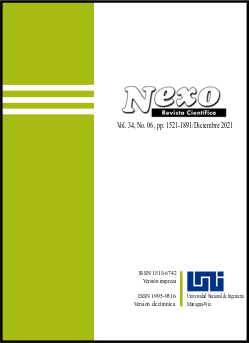Application of fuzzy mathematics for choosing maintenance intervals for non-public railway tracks
DOI:
https://doi.org/10.5377/nexo.v34i06.13194Keywords:
Fuzzy numbers, Reserve, Throughput, Rail railroad neck, Railroads shunting, SupplyAbstract
This article discusses the application of fuzzy mathematics for choosing time windows for the maintenance of non-public railway tracks. The design features of several stations and the points of junction of non-public railway tracks lead to hostile routes in the leads of the station. Moving the switching fleet through the neck creates hostility to the train route. To determine the optimal maintenance interval of non-public railway tracks, aimed at excluding hostility, it is necessary to know the throughput reserve of the railroad neck element in a certain time window. To localize the throughput reserve, it is proposed to divide the day into 30-minute intervals. This division will allow determining more accurately both the throughput reserve of the railroad neck element and the periods for servicing non-public railway tracks. The most appropriate way to calculate the throughput reserve is to use fuzzy numbers since this method allows taking into account the unequal capabilities of values within the intervals. Using the defuzzification procedure, a natural number is assigned to a given fuzzy number. After carrying out the defuzzification of the throughput reserve, the obtained values can be used to build an algorithm for selecting service intervals for non-public railway tracks.
Downloads
803
Downloads
Published
How to Cite
Issue
Section
License
Copyright (c) 2021 Universidad Nacional de Ingeniería

This work is licensed under a Creative Commons Attribution 4.0 International License.
The authors who publish in Nexo Scientific Journal agree to the following terms:
- Authors retain the copyright and grant the journal the right of the first publication under the license Creative Commons Attribution License, which allows others to share the work with a recognition of the authorship of the work and the initial publication in Nexo Scientific Journal.
- Authors may separately establish additional agreements for the non-exclusive distribution of the version of the work published in the journal (for example, in an institutional repository or a book), with the recognition of the initial publication in Nexo Scientific Journal.
- Authors are allowed and encouraged to disseminate their works electronically (for example, in institutional repositories or in their own website) before and during the submission process, as it can lead to productive exchanges, as well as earlier and greater citation of published works.










